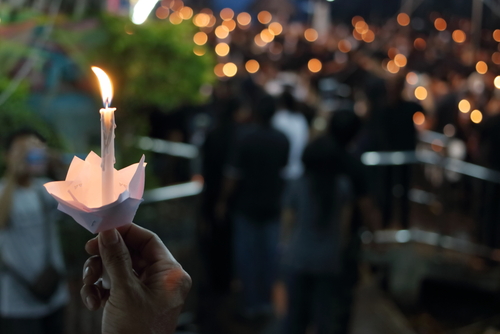Thirty years ago, John Jungblut wrote a short pamphlet entitled “On Hallowing One’s Diminishments” (Pendle Hill, $7). It’s a treatise suggesting ways we might frame the humiliations and diminishments that beset us through circumstance, age, and accidents so that, despite the humiliation they bring, we can place them under a certain canopy so as to take away their shame and restore to us some lost dignity.
And we all suffer diminishments. Certain things are dealt to us by genetics, history, circumstance, the society we live in, or by the ravages of aging or accidents that, seen from almost every angle, are not only bitterly unfair but can also seemingly strip us of our dignity and leave us humiliated.
For example, how does one deal with a bodily defect that society deems unsightly? How does one deal with being discriminated against? How does one deal with an accident that leaves one partially or wholly paralyzed? How does one deal with the debilitations that come with old age?
How does one deal with a loved one who was violated or killed simply because of his or her skin color? How does one deal with the suicide of a loved one? How do we set these things under some canopy of dignity and meaning so that what is an awful unfairness is not a permanent source of indignity and shame? How does someone hallow diminishments?
Danish philosopher Soren Kierkegaard, who was sometimes publicly ridiculed during his lifetime, including newspaper cartoons that made sport of his physical appearance (his “spindly legs”), offers the following counsel.
In the face of something like this, he says, it’s not a question of denying it, covering it up, or trying various distractions and tonics to deaden it or keep its sharpness at bay. Rather, we must make ourselves genuinely aware of it, “by bringing it to complete clarity.” By doing this, we hallow it. We bring it out of the realm of shame and give it a certain dignity. How is this done?
Imagine this as a paradigmatic example: A young woman is walking alone along a deserted road and is forcibly picked up by a group of drunken men who rape and kill her and leave her body in a ditch. Her shocked and horrified family and community do as Kierkegaard counsels. They don’t try to deny what happened, cover it up, or try various distractions and tonics to deaden their pain. Instead, they bring it to “complete clarity.” How?
They pick up her body, wash it, clothe her in her best clothing, and then have a three-day wake that culminates in a huge funeral attended by hundreds of persons. And their honoring of her doesn’t stop there. After the funeral they gather in a park near where she lived, and after some hours of testimony that honors who she was, they rename the park after her.
What they do, of course, does not bring her back to life, does not erase in any way the horrible unfairness of her death, does not bring her killers to justice, and it does not fundamentally change the societal conditions that helped cause her violent death.
But it does, in an important way, restore to her some of the dignity that was so horribly ripped away from her. Both she and her death are hallowed. Her name and her life now will forever speak of something beyond the unfairness and tragedy of her death.
We see examples of this on the macro level in the way the world has handled the deaths of people like Martin Luther King, John F. Kennedy, Bobby Kennedy, Malcolm X, Jamal Khashoggi, and others who were killed by hatred.
We have found ways to hallow them so that their lives and their persons are now remembered in ways that eclipse the manner of their deaths. And we see this, too, in how some communities handle the deaths of loved ones who have been senselessly shot by gang members or by police, where their manner of death belies everything that’s good.
The same is true for how some families handle the diminishments of their loved ones who die by drug overdose, suicide, or dementia. The indignity of their death is eclipsed by proper clarity around the very diminishment that brought about their death.
Their memory is redeemed. In short, that’s the function of any proper wake and any proper funeral. In bringing to clarity the very indignity that befalls someone, we restore dignity.
This is true not only for those who die unfairly or in ways that leave those they left behind grasping for ways to give them back some dignity. It’s also true for every kind of humiliation and indignity we, ourselves, suffer in life, from the wounds of our childhood, which can forever haunt us, to the many humiliations we suffer in adulthood.
We cannot change what has happened to us, but we can hallow it by “bringing it to clarity” so that the indignity is eclipsed.

